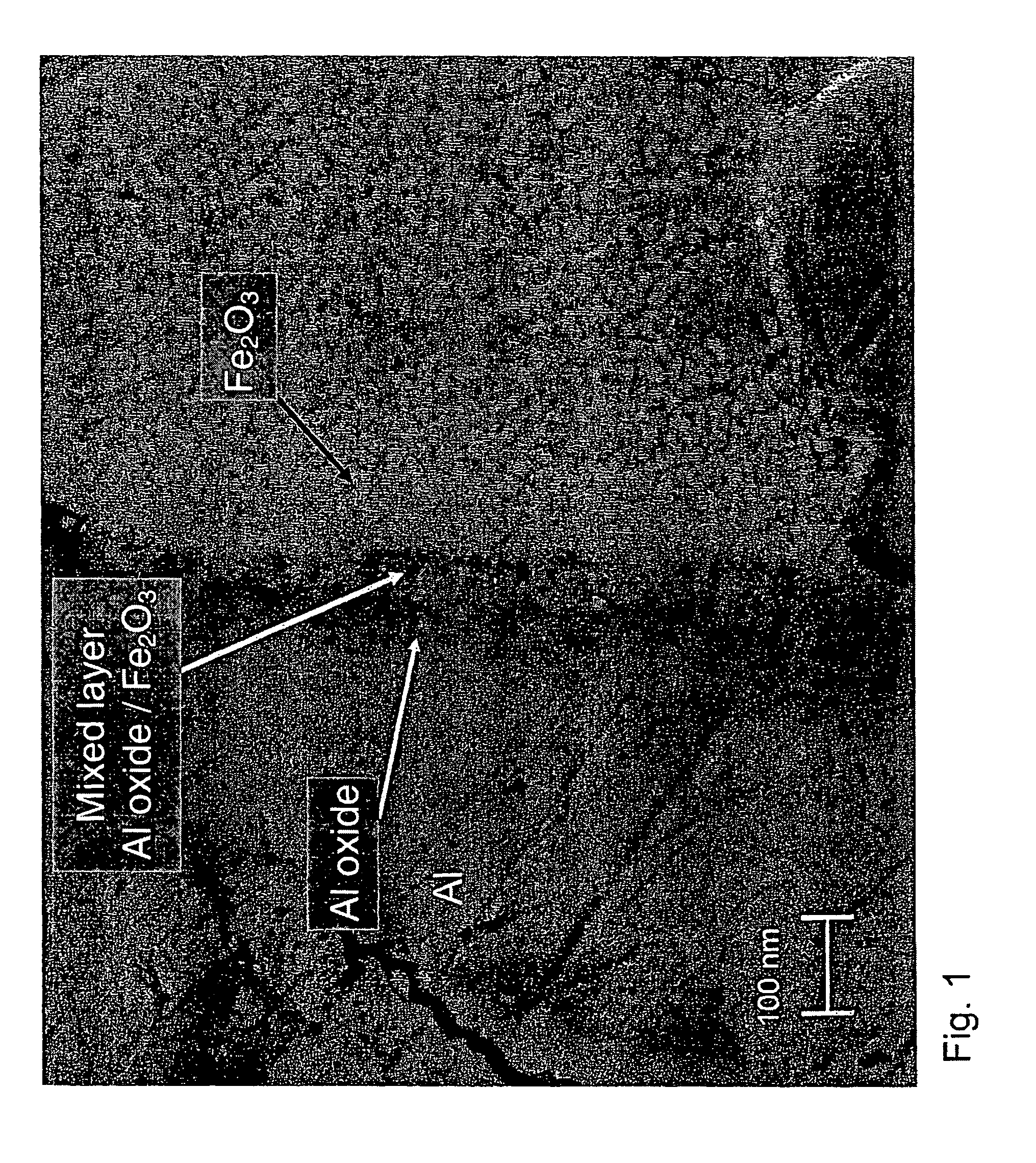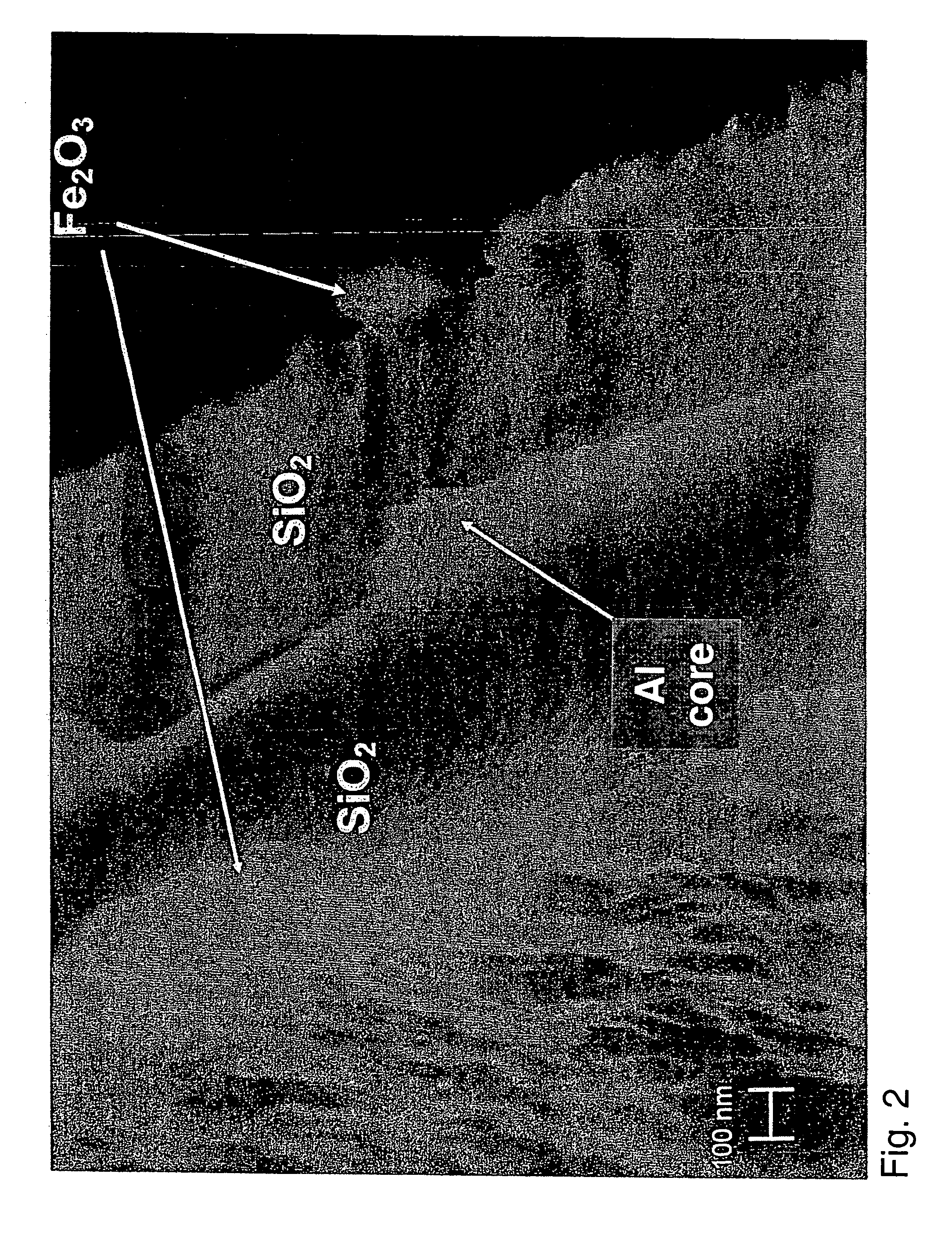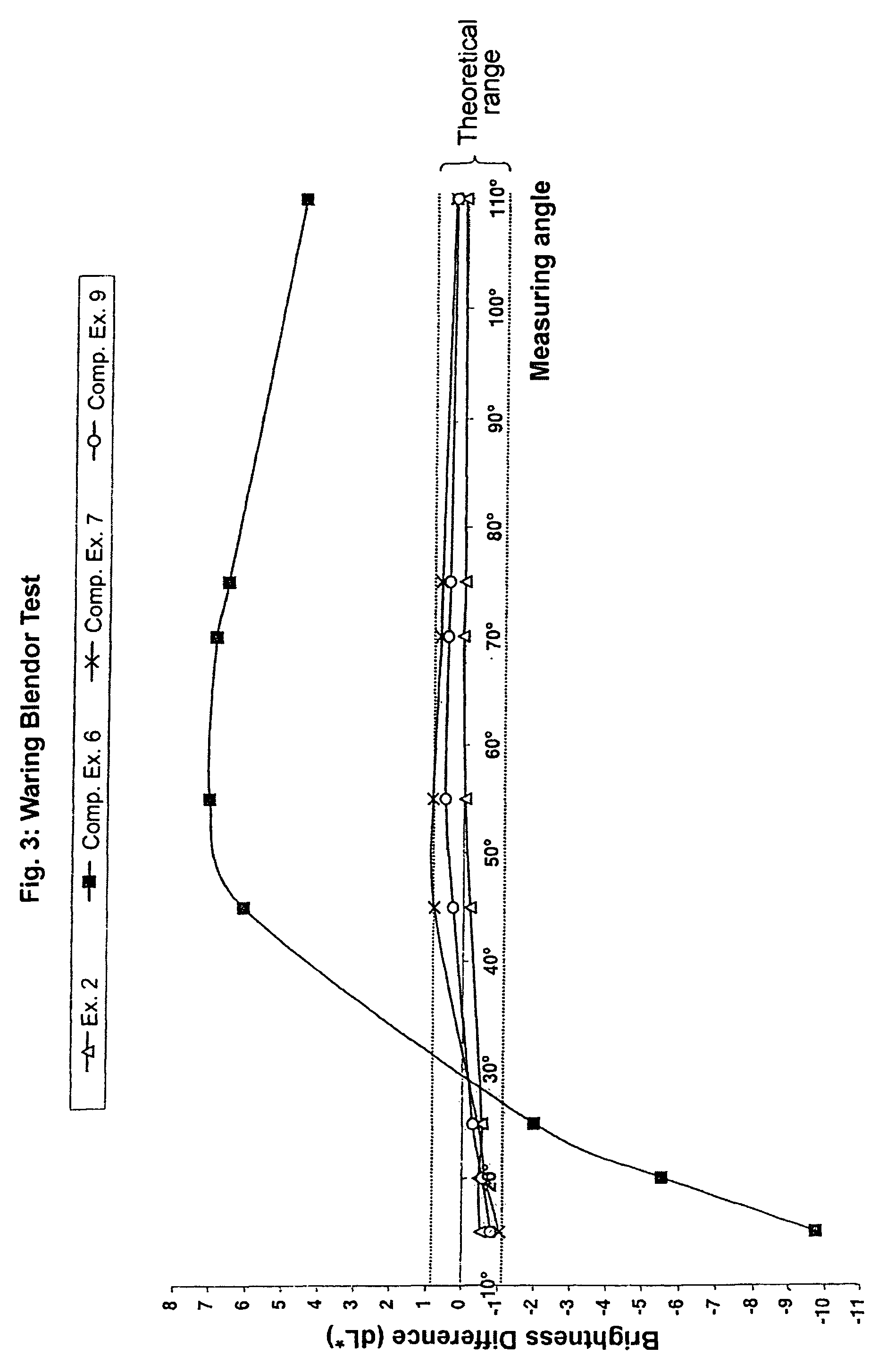Effect pigments having an aluminum or an aluminum aloy core, process for the production thereof and use thereof
a technology of effect pigments and aloy cores, applied in the field of effect pigments, can solve the problems of limited color range in practice, inaccessibility to strong red shades, and associated safety risks, and achieve the effects of low overall thickness, safe use, and soft color flops
- Summary
- Abstract
- Description
- Claims
- Application Information
AI Technical Summary
Benefits of technology
Problems solved by technology
Method used
Image
Examples
examples
[0107]The following Examples are provided only for the purpose of illustrating the invention. They are not to be construed as limiting the invention in any manner.
examples 1-5 and 12-14
According to the Invention
Oxidation: The production of the aluminum oxide / hydroxide layer was carried out according to the process disclosed in EP 0 848 735.
[0108]In a plane-ground reaction vessel of sufficient size, 100 g of aluminum pigment were introduced in the form of a paste with 240 g of isopropanol and dispersed for 10 min. Subsequently, a mixture of demineralized water and base (for amounts see Table1) was added to the vessel. The suspension was heated to just below the boiling point. After a heating time of 7 h, the suspension was allowed to cool. 16 h later, the mixture was filtered off with suction through a Büchner funnel and the filter cake was dried in a vacuum drying oven at 100° C. for 6 h with N2 flushing.
[0109]The oxidized aluminum pigment was added with technical ethanol to a 3 liter plane-ground reaction vessel and dispersed. The amounts used are indicated in Table 1. In order to ascertain the appropriate amounts in the case of larger batches,...
example 16
According to the Invention
[0171]A nail varnish formulation having the following composition was also produced by mixing and stirring the starting components.
[0172]
TABLE 6Composition of nail varnishConcentrationSubstancein % by weightNitrocellulose15Ethyl acetate21n-Butyl acetate36Isopropyl alcohol8Polyester binder9Dibutyl phthalate5Camphor2.0Stearalkonium bentonite1.0Pigments of Example 4 according to3.0the invention
[0173]Artificial, curved fingernails were coated with this nail varnish. Following drying of the solvent, a metallic effect with a weak color flop from lemon gold to reddish appeared.
[0174]The invention accordingly relates to the provision of colored effect pigments based on aluminum pigments oxidized under chemical wet-process conditions. These are coated under chemical wet-process conditions with a metal chalcogenide layer, preferably metal oxide layer, having a refractive index of >1.95. Between the porous aluminum oxide / hydroxide layer and the highly refractive metal...
PUM
| Property | Measurement | Unit |
|---|---|---|
| Percent by mass | aaaaa | aaaaa |
| Thickness | aaaaa | aaaaa |
| Thickness | aaaaa | aaaaa |
Abstract
Description
Claims
Application Information
 Login to View More
Login to View More - R&D
- Intellectual Property
- Life Sciences
- Materials
- Tech Scout
- Unparalleled Data Quality
- Higher Quality Content
- 60% Fewer Hallucinations
Browse by: Latest US Patents, China's latest patents, Technical Efficacy Thesaurus, Application Domain, Technology Topic, Popular Technical Reports.
© 2025 PatSnap. All rights reserved.Legal|Privacy policy|Modern Slavery Act Transparency Statement|Sitemap|About US| Contact US: help@patsnap.com



